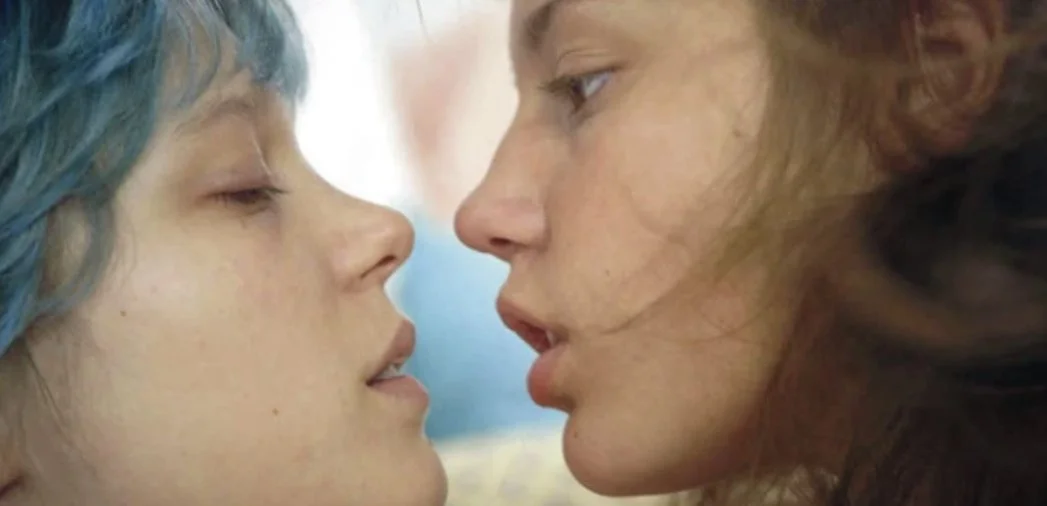“The year we won the Palme d'Or remains an incredible moment, a kind of nirvana.” — Léa Seydoux
The above quote is from a very interesting interview conducted by Le Figaro. “Blue is the Warmest Color” actresses Léa Seydoux and Adèle Exarchopoulos look back on the 10-year anniversary of this monumental film for which a Steven Spielberg-led jury gave the Palme d’Or. Controversy ensued.
The unusual filmmaking process was led by director Abdelatif Kechiche.
Back in 2013, Seydoux and Exarchopoulos complained about Kechiche, saying his filmmaking techniques were abnormal. They described the experience as "horrible" and said they would not work with him again. For example, he’d take days to shoot the film’s explicit sex scenes, leaving his nude actresses in rather vulnerable situations.
In this Figaro interview, Seydoux admits and knows that the working conditions were the oddest she’d ever experienced:
I already had enough experience on a set to know that all this was not normal. Such a film could no longer be made today. None of us gave up, we supported each other. In my entire career, it's the film I'm most talked about in the whole world. He marked generations.
Meanwhile, Exarchopoulos seemed to be affected by the shoot, saying that after it was completed she felt “lost” but looks back on it as a learning lesson:
After ‘Blue’, it was very hard to shoot without Abdel and Léa. I felt lost. Abdel leaves a lot of freedom to act, the scenes are written, but you can improvise, he lets the camera run for hours. Then finding myself on sets where everything was more professional but also more academic confused me. This is the trap of the masterpiece: one can fear that whatever comes next will no longer have any flavor. At the same time, this film taught me very clearly my own limits and the limits of what I could accept. At 17, when I accepted this role, I rushed headlong without asking myself any questions, and so much the better, fate does things well.
However, when asked about whether they’d ever work again with Kechiche, the actresses didn’t necessarily say no.
Exarchopoulos: “The question is delicate. My relationship to the intensity of work has changed. I recently shot with Jeanne Herry, and I worked in joy - which did not prevent me from crying, from playing the fatigue, the pain... I could return with Abdel for a role that would be a challenge, for both us.”
Seydoux: “I get asked that question all the time, I'm not going to rub salt in the wound. Would he like to shoot with me? I do not think so. What about me, would I do this movie again today? I don't think so either. Kechiche films young people particularly well, and I'm no longer old enough to shoot in one of his films. I shot ‘Blue’ when I had no children, no ties. Today, my life has changed, everything is different”
The Palme d’Or-winning lesbian drama starred Exarchopoulos and Seydoux as lovers. Both actresses condemned Kechiche for taking advantage of their bodies during production of the sexually intense movie — which included a 9-minute graphic sex scene between the two actresses.
Not much is hidden in ‘Blue.’ Kechiche had his film run for more than 3 hours. Of course Kechiche shot the sex scenes in a sensual, male-gazing kind of way and, yes, he got away with a lot. However, sex was an integral part of the story. The two lovebirds at the heart of the film had practically nothing in common, except for one thing: the lust they had for each other. Sex drove their relationship. That’s why I found Kechiche's graphic sex scenes necesarry.
Kechiche tried to show us how these two girls can only connect in the bedroom. Outside of it there wasn’t much chemistry, which is why their relationship eventually turned into a faltering fling.
Six years later, Kechiche was again in hot water for his Cannes polarizer, “Mektoub, My Love: Intermezzo.” In June, French publication Midi Libre accused the director of purposely inebriating his lead actress, Ophélie Bau, in order for her to perform a non-simulated sex scene.





